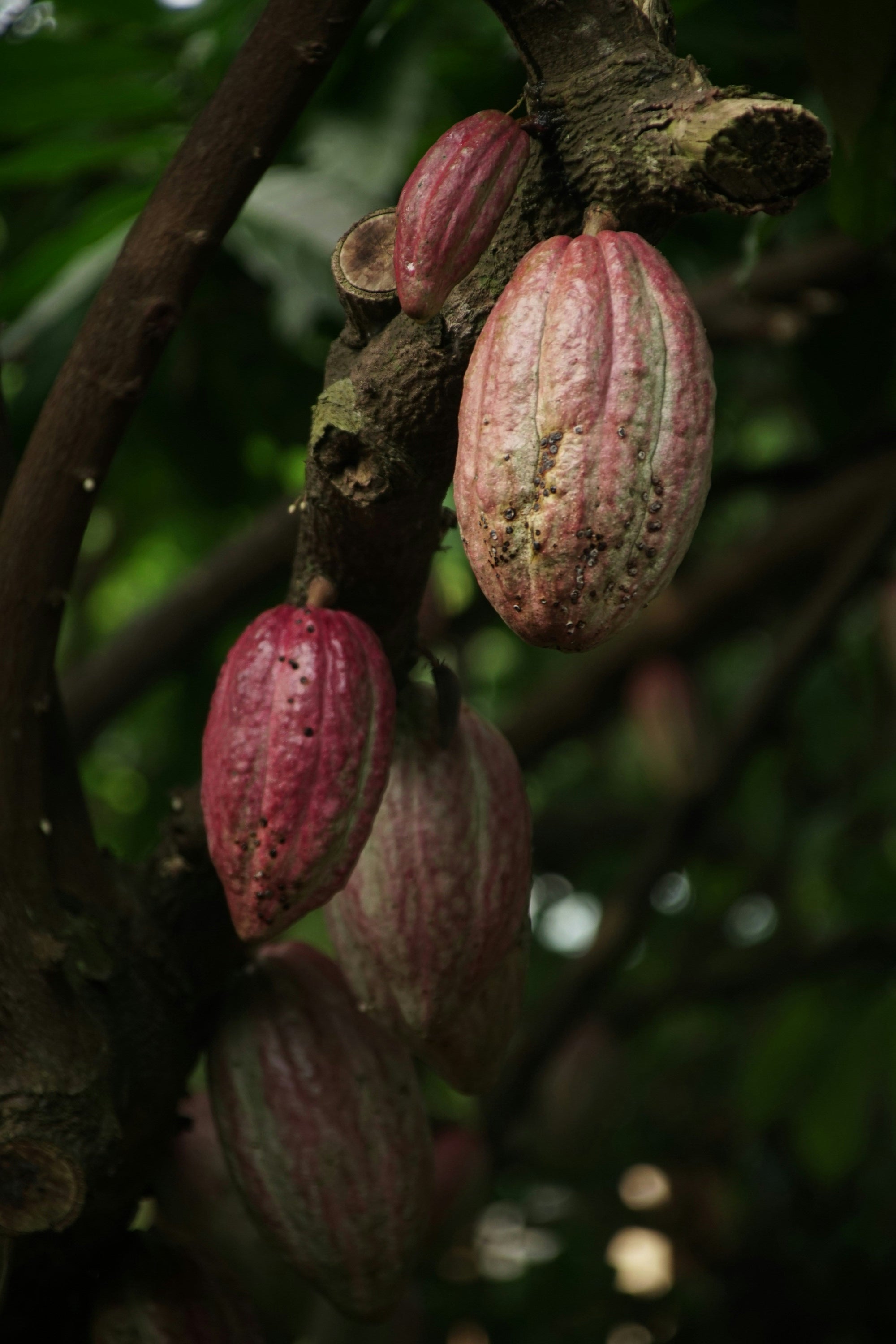When you walk down the candy aisle of a regular store, you’ll find a wide array of chocolate bars, from classic Snickers to mass-produced milk chocolates. But have you ever wondered why some chocolates are priced much higher than others? What makes gourmet chocolate so special, and why does it come with a premium price tag? In this post, we’ll explore the key differences between gourmet chocolate made from high-quality cacao and the cheaper options, shedding light on the benefits, sourcing, ingredients, and craftsmanship that elevate the experience of enjoying premium chocolate.
The Difference Starts with the Cacao
The foundation of any great chocolate is the cacao, and the quality of cacao used in gourmet chocolate is far superior to that of mass-produced chocolates.
Gourmet Chocolate: High-quality gourmet chocolate is made from fine cacao beans, often sourced from small, sustainable farms. These beans are carefully harvested, fermented, and dried to preserve their unique flavors. The beans come from specific regions known for their exceptional cacao, such as Venezuela, Ecuador, or the Dominican Republic. These regions produce beans with distinct flavor profiles, ranging from fruity and floral to nutty and rich.
Cheap Chocolate: On the other hand, many mass-produced chocolates use lower-quality cacao beans, often sourced from large plantations that prioritize quantity over quality. These beans may be processed in a way that diminishes their natural flavors, resulting in a more generic, less complex chocolate taste.
Ingredients: Simple, Pure, and Natural
One of the key differences between gourmet and cheap chocolate lies in the ingredients used.
Gourmet Chocolate: Premium chocolates often contain only a few, high-quality ingredients. You'll find cacao, cacao butter, sugar, and perhaps a bit of vanilla or sea salt. The goal is to let the pure, rich flavor of the cacao shine through. Many gourmet chocolate makers avoid artificial additives, preservatives, and emulsifiers, focusing on quality over quantity. This results in a cleaner, more natural chocolate experience that’s as close to its raw form as possible.
Cheap Chocolate: Mass-produced chocolates often contain a long list of ingredients, including artificial flavors, preservatives, and hydrogenated oils. These additives may alter the taste and texture of the chocolate, giving it a more uniform but less authentic flavor. Additionally, cheaper chocolates may contain less cacao and more sugar or milk, which can dilute the flavor and make the chocolate overly sweet.
Craftsmanship and Artistry: Handcrafted and Hand-Painted
When you purchase gourmet chocolate, you’re not just buying a treat—you’re investing in an experience.
Gourmet Chocolate: Many premium chocolatiers take pride in their craftsmanship, handcrafting each piece with care. Chocolates may be hand-painted with intricate designs, showcasing the artistry and attention to detail that goes into each creation. Some chocolatiers even use unique techniques like tempering to ensure a smooth, glossy finish and a satisfying snap when you break a piece. This level of craftsmanship elevates the chocolate from a simple snack to an indulgence.
Cheap Chocolate: In contrast, mass-produced chocolates are made using machines and assembly lines, which prioritize efficiency over artistry. While this allows for mass production and lower prices, it also means that each piece is identical and lacks the personal touch and creativity found in gourmet chocolates.
Sourcing and Community Impact: Supporting Sustainable Practices
The sourcing of cacao is another critical factor that sets gourmet chocolate apart.
Gourmet Chocolate: High-quality chocolatiers often prioritize ethical sourcing practices, supporting fair trade and sustainable farming methods. By purchasing cacao directly from farmers or cooperatives, these companies ensure that the farmers receive fair wages for their work. Additionally, many gourmet chocolate makers invest in the communities where the cacao is grown, helping to improve local infrastructure, education, and healthcare. This direct connection between the chocolate maker and the cacao farmer creates a more meaningful and positive impact on the community.
Cheap Chocolate: Mass-produced chocolate brands, however, may source their cacao from large, industrial plantations where the workers are often paid poorly and subjected to exploitative conditions. The focus on cost-cutting and mass production can result in a lack of transparency in the supply chain, making it difficult to know where the cacao comes from and whether it was ethically sourced.
The Experience: A Treat for the Senses
While a Snickers bar or a Hershey’s milk chocolate bar may satisfy a quick sugar craving, gourmet chocolate offers a far richer and more complex experience.
Gourmet Chocolate: With premium chocolate, every bite is a sensory journey. The texture is smooth and velvety, the flavor is deep and layered, and the aroma is intoxicating. Many gourmet chocolates are designed to be savored slowly, allowing you to fully appreciate the nuances of the cacao. Whether it’s a single-origin dark chocolate or a milk chocolate truffle filled with ganache, gourmet chocolate offers a multi-dimensional experience that engages your taste buds and elevates your enjoyment.
Cheap Chocolate: Mass-produced chocolate, on the other hand, is often designed to be consumed quickly and without much thought. The texture can be waxy or overly sweet, and the flavor tends to be one-dimensional, with a focus on sweetness rather than complexity. While it may be convenient, it doesn’t offer the same depth or satisfaction as a fine chocolate crafted with care.
Conclusion: Why Pay More for Gourmet Chocolate?
So, why pay more for gourmet chocolate when you can grab a Snickers at the store for a fraction of the price? The answer lies in the quality, craftsmanship, and experience that come with premium chocolate. Gourmet chocolates are made from high-quality cacao, with simple, natural ingredients and a focus on ethical sourcing. They’re handcrafted with care, offering a sensory experience that mass-produced chocolates simply can’t match.
By choosing gourmet chocolate, you’re not only treating yourself to a more luxurious experience, but you’re also supporting sustainable farming practices and communities around the world. So the next time you indulge in a piece of fine chocolate, savor the richness, the flavor, and the story behind it. It’s worth every penny.


